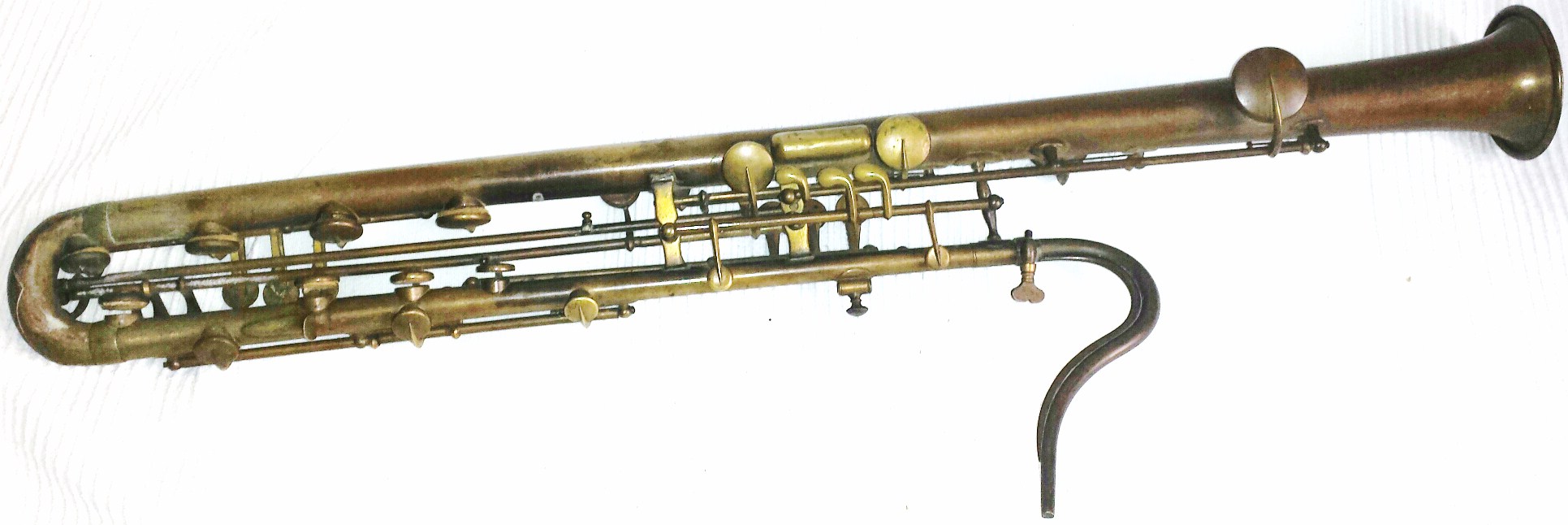Old Musical Instruments
Buying-Selling Early Musical Instruments
William Petit wpetit@sfr.fr Tel 00 33 6 13 12 43 22
Appraisal
Saxophones Selmer
Saxophones Adolphe Sax
Flûtes
Woodwind
Brasswind
Mandolins
Strings
Violin-Viola d'Amore-Quinton
Miscellaneous
Sarrusophone Alto de Gautrot no 58

The sarrusophone is a family of transposing musical instruments patented and placed into production by Pierre-Louis Gautrot in 1856.
It was named after the French bandmaster Pierre-Auguste Sarrus (1813-1876) who is credited with the concept of the instrument,
though it is not clear whether Sarrus benefited financially from this association.
The instrument was intended to serve as a replacement in wind bands for the oboe and bassoon which, at that time,
lacked the carrying power required for outdoor band music.
The sarrusophone was manufactured in the following sizes and had the following theoretical ranges:
E-flat Sopranino B-flat Soprano E-flat Alto B-flat Tenor E-flat Baritone B-flat Bass EE-flat Contrabass CC Contrabass BB-flat Contrabass
Gautrot aîné produced woodwind and brass instruments and was founded by Pierre Louis Gautrot (d.1882) in Paris.
The company and factory was one of the largest in Europe by 1846, and pioneered the use of steam power.
The company opened up branches all over Europe and even in New York.
A second factory was established in Chateau-Thierry in 1855 and a third, producing string instruments in Mirecourt.
Gautrot had several legal disputes with A. Sax.The firm's trade name was changed to Gautrot-Marquet in 1875,
and to Gautrot aîné-Durand & Cie. in 1877. Finally, in 1883 Couesnon purchased the firm.
